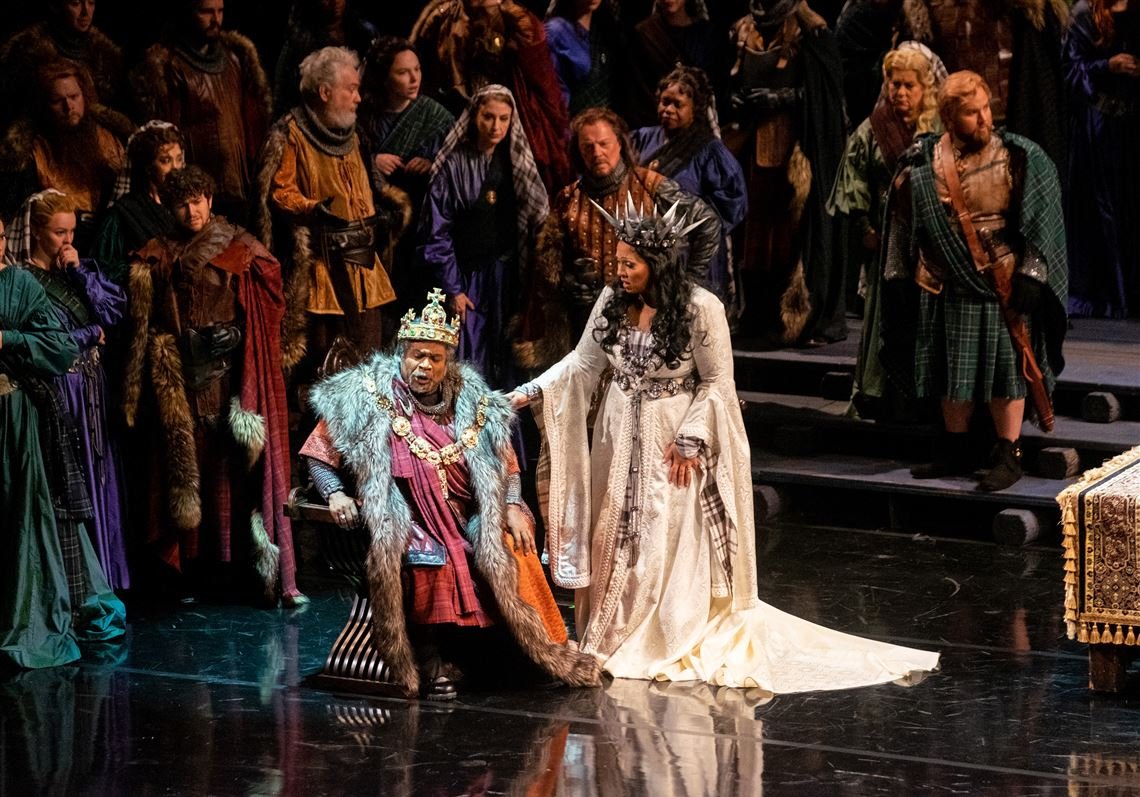Othalie in turandot
Opera News describes her as “a vocally secure Turandot, her gleaming tones well suited to the ice princess’s misanthropic resolve.”
William Hemminger Courier & Press
“It was no surprise to read that Othalie Graham, as Princess Turandot, specializes in Wagner, so demanding is her vocal role in this opera. Graham has a huge voice, and she was able to convey vocally both obsessive power and vulnerability in her character.”
Turandot en el Teatro Cervantes
Opera desde el Sofa
En cuanto al reparto, un nombre destacaba por encima del resto. La soprano canadiense Othalie Graham, que había generado gran expectativa por su caché de talla internacional, cumplió con el complicado rol de la princesa de hielo. Por fin una gran diva visitaba Málaga. Su potencia vocal fue incontestable así como su dominio de una partitura tan exigente para su cuerda que pocas sopranos pueden abordar con solvencia. A nivel escénico fue una gigante con una presencia y actitud cautivadoras. Desconozco como se desenvolverá en otros roles pero parece nacida para ser la princesa Turandot.
"Among the singers, a name stands out from the rest. Canadian soprano Othalie Graham, who we were expecting to be of international caliber, met the complicated role of the iced princess. Finally a grand Diva visited Málaga. Her strong voice was under control at all time. Not all sopranos can do it this easy. She always knew how to act and showed a captivating attitude. We don't know how she would be in other roles but in this one she was Turandot, the princess."
Málaga: Una ‘Turandot’ renovada
La gran revelación de la producción fue el debut de Othalie Graham en el Cervantes como la princesa de hielo: generosa en el plano medio e inmensa en el registro agudo desde donde reinó de principio a fin. Su presencia en la escena acaparó toda la atención.
"The big revelation of this production was the debut of Othalie Graham in the Cervantes Theater as the iced princess. She was generous in her middle and immense in the high register, where she was the queen from beginning to end. Her presence on stage was at all times controlled."
Othalie in aida
"Canadian soprano Othalie Graham lent her supple and beautiful voice to Aida, including gorgeous, delicate pianissimi." L’Opera Magazine
Othalie Graham, making her Belk Theater debut, reminded me a little of Leontyne Price… There was no shortage of strength to the voice, piercing through the orchestra, the chorus, and the full phalanx of principals at the climax of the grand parade scene. Yet there is a bloom to Graham’s pianissimos that Price doesn’t match in her Decca recording with Solti, and there is also ample evidence of diva acting skills. At various times, we see her clearly as both royalty and a serving girl, without a jarring disconnect between the two.
Othalie in lady macbeth
"Othalie Graham, in the role of "Lady Macbeth" [was] very good, interpreting the very difficult role. In particular, [she] was appreciated in the Sleepwalking Scene, [contrasting] an elegant half-voice with soft overtones, to a fuller timbre... [up] to powerful high notes."
Il Messagero
Rieti, Italy
othalie as the foreign princess
Othalie Graham as the Foreign Princess augmented an imperious demeanour with a stentorian, steely soprano that shattered the bonds between the Prince and Rusalka.
Opera Magazine
Othalie in concert
Ms. Graham was the perfect soloist for this concert, having the kind of voice and presence that will amaze and delight anyone. She is stately and beautiful, generous and expressive in a restrained way, and possesses the type of dramatic voice that can make people who think they hate opera (or hate Wagner) think again. There is a magical Italian word to describe the phenomenon of classical vocal beauty: "chiaroscuro". It literally means "bright-dark" and originally was a term employed to describe the strong contrast of light and shadow and the resulting dimensionality it creates in Italian Renaissance painting. Usage spread to other art media and eventually became a musical term applied specifically to the balance of bright and dark color in the human singing voice. Chiaroscuro has been one of the defining standards, together with the principles of breath control and legato, of the vocal production, technique and style we recognize as Bel Canto.
Ms. Graham's voice is an excellent example of perfect chiaroscuro. Her voice, although full and darkly rich in its lower and middle range, actually is also "bright" with a steely quality, which cuts through the orchestra easily. But brightness alone isn't enough. Brightness, besides being penetrating, can also be thin, nasal, harsh or all three. And on the flip side, dark beauty without bright can be husky and throaty, and will not make it over the orchestra. In Ms. Grahams case, her powerful "bright" is perfectly counterbalanced with a lusciously rich and burnished "dark" quality. Combined with sensitive musicality, good German diction, excellent technique, the result is the ideal dramatic soprano sound. Her high power notes both electrified and embraced the listener.







